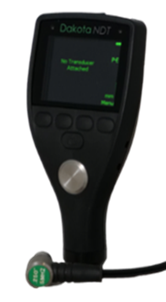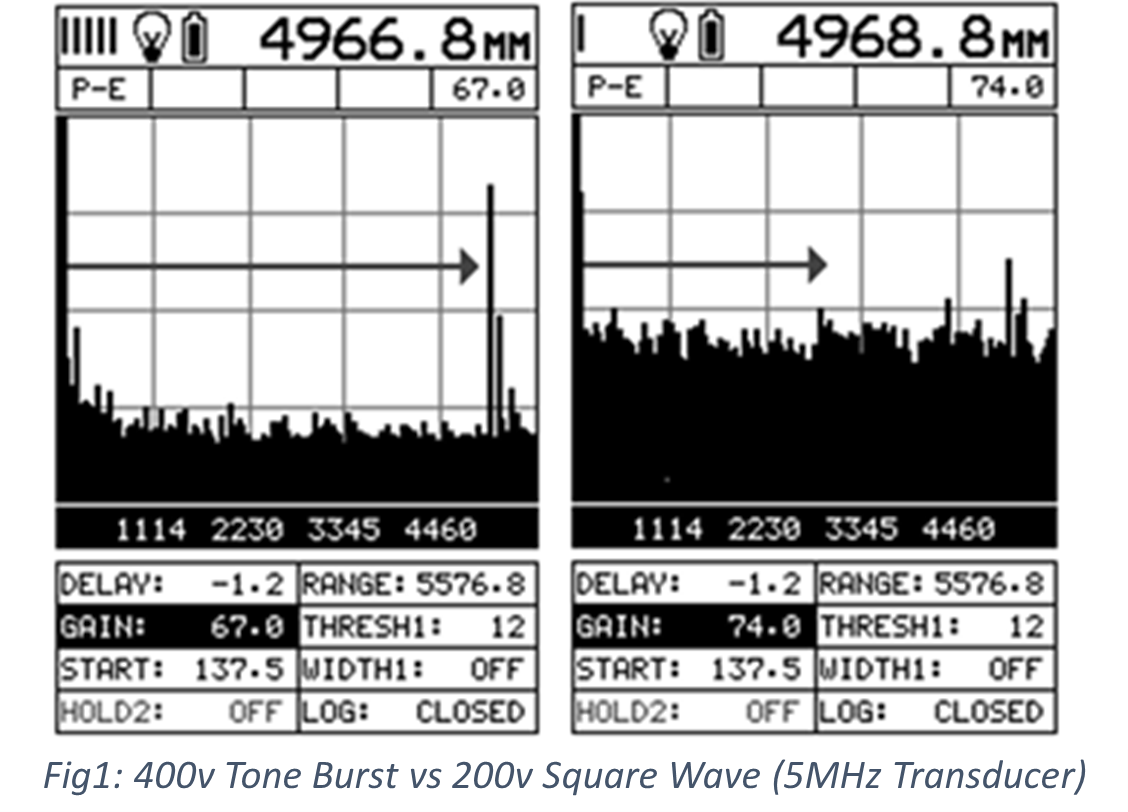How to Improve Measurement Results on Challenging Materials with Ultrasonic Thickness Gauges
Application Overview:
When testing materials with complex internal structures, such as cast iron, alloys, and composites, using ultrasonic thickness gauges, the internal structure can generate noisy signals at the receiver. These noisy signals can lead to unstable or failed readings, making it challenging to obtain accurate thickness measurements.
To mitigate this issue, gain is often employed to enhance the signal response. Increasing the internal gain amplifies the strength of the received signal. However, this amplification not only increases the desired signal, but also any additional noise generated by the material’s internal structure.


Adjusting the Pulse Voltage:
An effective method to improve signal clarity is to adjust the amplitude of the signal transmitted into the material. By increasing the transmitted signal’s amplitude, the strength of the returned signal is also increased. This, in turn, reduces the amount of internal gain required by the gauge to process the signal.
Figure 1 illustrates this concept, where an increased pulse voltage is used in the left image to clarify the high-gain signal shown on the right. The DakotaNDT product line offers thickness gauges with adjustable pulse voltages ranging from 50 to 400V, providing users with the flexibility to optimize signal transmission for various materials.
The Dakota CX8-DL Corrosion Thickness Gauge, featured above, is a unique gauge that combines pulse adjustment settings of 50/75/100V with an Automatic Gain Detection feature, making it an ideal tool for measuring challenging materials with complex internal structures.
Surface Preparation:
Proper surface preparation is crucial for obtaining accurate and reliable thickness measurements when using ultrasonic gauges on challenging materials. The surface should be clean, smooth, and free from any loose debris, rust, or scale. Rough or uneven surfaces can scatter or absorb the ultrasonic waves, leading to weak or distorted signals.
Sometimes it’s necessary to use abrasive methods like grinding, sanding or wire brushing to create a smooth, even surface for testing. Always remember to apply a thin layer of ultrasonic couplant gel to facilitate the transmission of sound waves between the transducer and the test material. Ensuring adequate surface preparation, along with optimizing instrument settings like pulse voltage and gain, as well as choosing the appropriate transducer, will produce the most accurate and repeatable measurement results.
Dakota gauge used in this application:
For more details on how the Dakota CX Corrosion Thickness Gauges can give an advantage to your inspection process.
